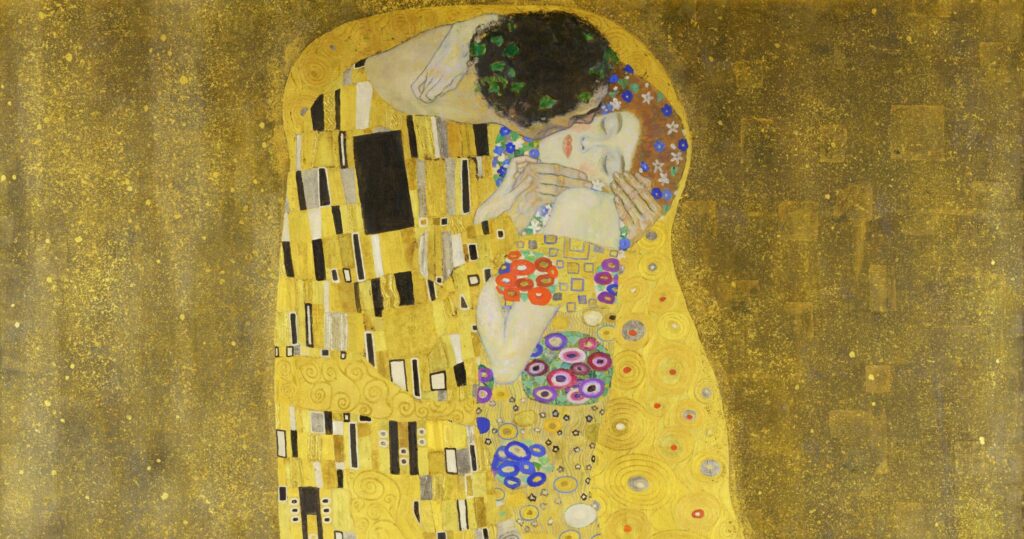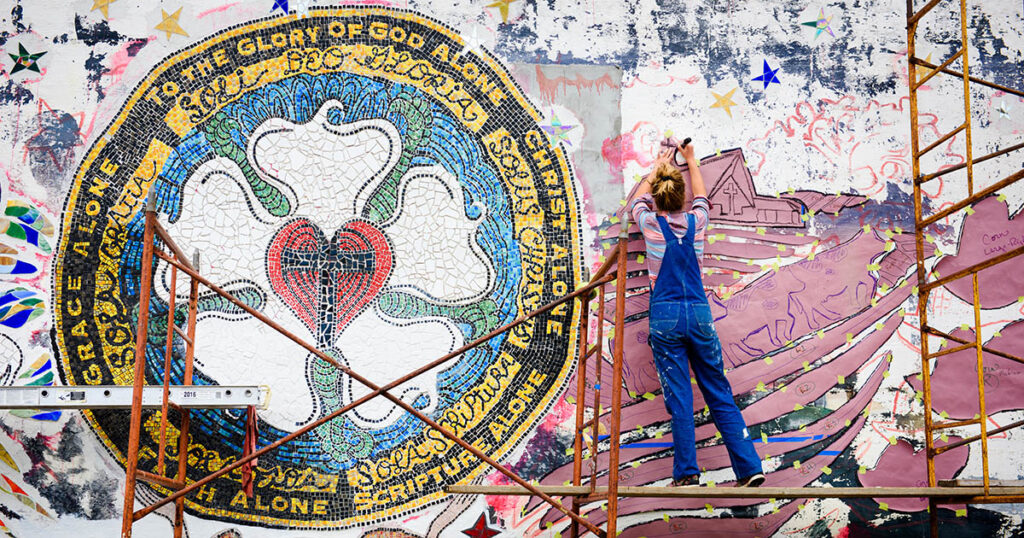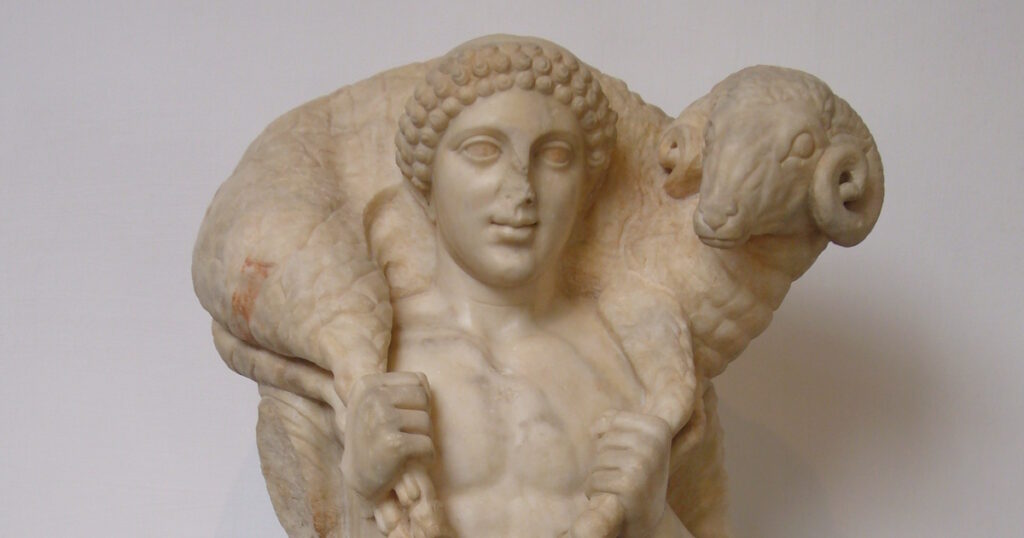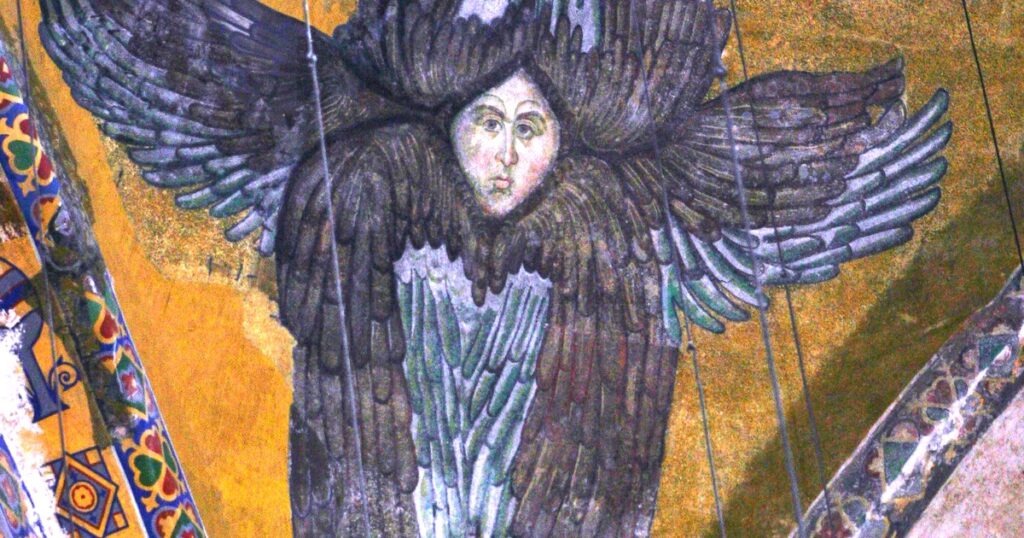An art reflection by Kelly Schumacher (Uffenbeck) of Agnus Dei Liturgical Arts on Gustave Klimt's "The Kiss." This is one installment of a monthly series providing reflections on works of art and music from a Lutheran perspective.
Let him kiss me with the kisses of his mouth: for thy love is better than wine. (Song of Songs 1:2 KJV)
Gustave Klimt’s “The Kiss” is a beloved painting in Vienna. At the time it was painted, it was deemed scandalous, depicting two lovers in a passionate embrace. It is a very popular painting, seen in art history books and on t-shirts, calendars, prints, pillows and coffee mugs. Why is this painting so popular? Is there a universal meaning to it that touches the hearts of so many? I believe that this beautiful painting strikes a chord as it shows both the concrete and symbolic natures of marital love.

Songs of spring
The flowers appear on the earth; the time of the singing of birds is come, and the voice of the turtle is heard in our land; The fig tree putteth forth her green figs, and the vines with the tender grape give a good smell. Arise, my love, my fair one, and come away. (Song of Songs 2:12, 13 KJV)
The Kiss is one of my favorite paintings, being a hopeless (or, rather, hopeful) romantic! I think it is beautiful and can represent a joyful image of love and marriage. Whenever I see this painting, it makes the think of Song of Songs: There is mystery, romance and beauty depicted. I see it illustrating “Song of Solomon” in a most poetic way.
The verses above illustrate the beauty of creation, specifically of springtime. We celebrate Easter in the spring, connecting the new life of the world and Christ’s resurrected life, for Himself and all believers. Klimt’s painting shows purples, blues and greens, all cool lush colors that are soft with morning dew and earth. You can almost feel your own bare feet in the grass soaking up the freshness of spring! Flowers are also important in weddings to symbolize the new life that is shared with one’s spouse and hopefully an abundance of children. This is God’s design for Adam and Eve in creation, and even though sin has marred that picture of love, it is still etched into our bodies and hearts as male and female.
A golden wedding
Therefore shall a man leave his father and his mother, and shall cleave unto his wife: and they shall be one flesh. (Genesis 2:24 KJV)
When I look at this painting, I always think of the image as a wedding scene. In this scene, no one else is present. All the two see is each other and their love. Yes, we marry in the company of witnesses, but after the wedding, we are set apart for each other and each other alone. In the same way we are set apart to belong to Jesus and Him alone in our Baptism. As we see this sign of marital faithfulness represented in this painting, we can also be reminded of the faithfulness and strong bond between us and our God, as we are the church, the bride of Christ.
The couple kneels together in the embrace. This could be a posture of humility, prayer or even vulnerability. Husband and wife kneel together on the edge of a patch of lavender flowers mixed with gold. While this painting of the kiss shows a very fleshly image of love, Klimt depicts it as an almost spiritual experience between the couple. We know that his use of gold leaf was inspired by Byzantine mosaics of religious art. Yes, even here, Klimt shows us (though I am not sure it was intentional) that human marital love is a signpost to show us how Jesus loves His Bride the church. What I see in this picture is that marriage is an image, a shadow of the ultimate marriage of Christ and the church.
The bride
I am the rose of Sharon, and the lily of the valleys. (Song of Songs 2:2 KJV)
The beautiful garments of many colors and shapes are reminiscent of African batiks, almost tribal in nature and hinting at the simplicity of the couple’s love. In terms of colors in the Bible, we can think of the rainbow that God put in the heavens after the flood, as a promise to not cover the earth with water again in judgment. The colors are a blessing and in some ways the woman is receiving the blessings from her husband. The wife has beautiful clusters of round colorful shapes. They remind me of wedding bouquets adorning her body. She has a golden veil trailing behind her as a beautiful bride that shines. Her hair is adorned with a tiara of flowers, perhaps spring flowers, as the gold leaf fills the canvas painting with sunshine.
When a woman marries, she takes her husband’s last name and accepts his covering and protection over her life for all of her days. Likewise, we the church receive our baptismal identity from Christ, who washes away our previous identity as sinners and clothes us with a wedding garment, claiming us as His own. We become lily white as He washes away our sins.
The groom
His left hand is under my head, and his right hand doth embrace me. (Song of Songs 2:6 KJV)
The husband wears garments that are rectangular and linear, representing masculinity, strength and structure. His color palette is limited to grey, black and white. The man’s face is not seen, he is veiled in mystery. Who is he? In contrast, the wife’s face is fully revealed! Likewise, we do not see the face of Christ, we only guess, but we long for the day when we will see Him face to face. What we do see is the church — though she is not perfect, a sinner in need of her Savior, she receives all the love, blessings and forgiveness from her Lord. We see the groom embracing the bride lovingly and gently, not with force but care. In some ways we can see the third use of the law: Christ guides the church toward Himself in all things in righteousness.
Law and Gospel, sin and grace, a picture of redemption
The Church’s one foundation Is Jesus Christ, her Lord; She is His new creation By water and the Word. From heav'n He came and sought her To be His holy bride; With His own blood He bought her, And for her life He died. (LSB 644)
In artwork, artists appropriate things they have seen before to inspire a particular piece. The artist draws upon an archetype or makes a connection between two ideas, expounds upon those ideas and makes them relevant to that particular audience. For example, we could take this painting by Klimt, tweak it to the specificity of Song of Solomon and create an entirely new painting inspired by the older one. The background could include how Christ redeems the church, biblical narratives of the fall into sin, or include the specific flora and fauna in the Song of Songs. This is the beauty of painting that I love, the opportunity to weave narratives and symbols into a work of art on the same canvas to reflect their ultimate source and meaning in God.
It was but a little that I passed from them, but I found him whom my soul loveth: I held him, and would not let him go, until I had brought him into my mother’s house, and into the chamber of her that conceived me. (Song of Songs 3:4 KJV)






Wonderful spiritual interpretation of this beloved painting! What always fascinated me was that Adam and Eve are embracing at the edge of a cliff! Since they are clothed I wonder if it depicts the moment of exile from Eden?!
This is a great example of how art and literature can be very different from real life. Gustav Klimt fathered 14 children, all out of wedlock. Yet, he produced this painting. And King Solomon had hundreds of wives and concubines. Yet, he wrote the Song of Songs.